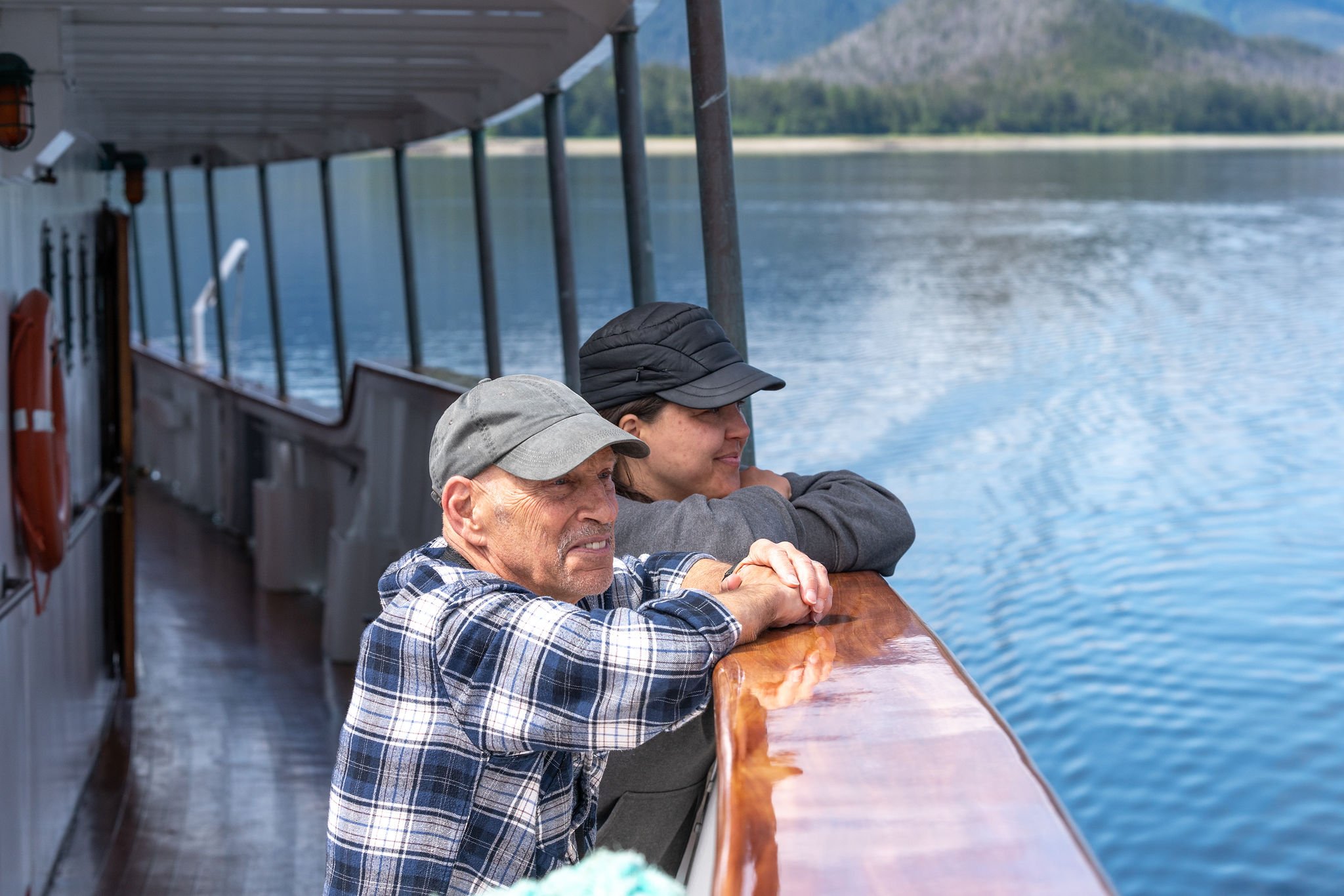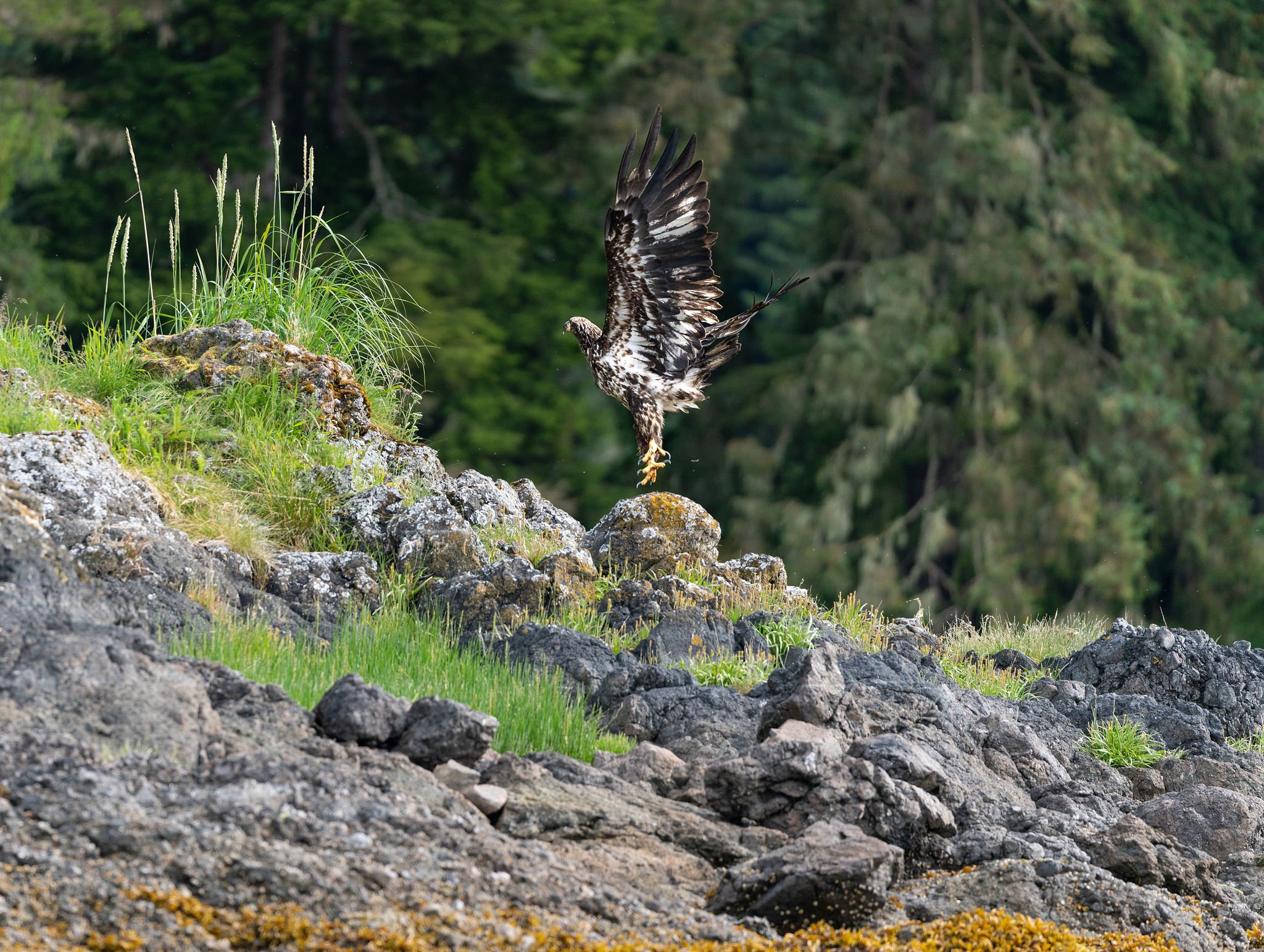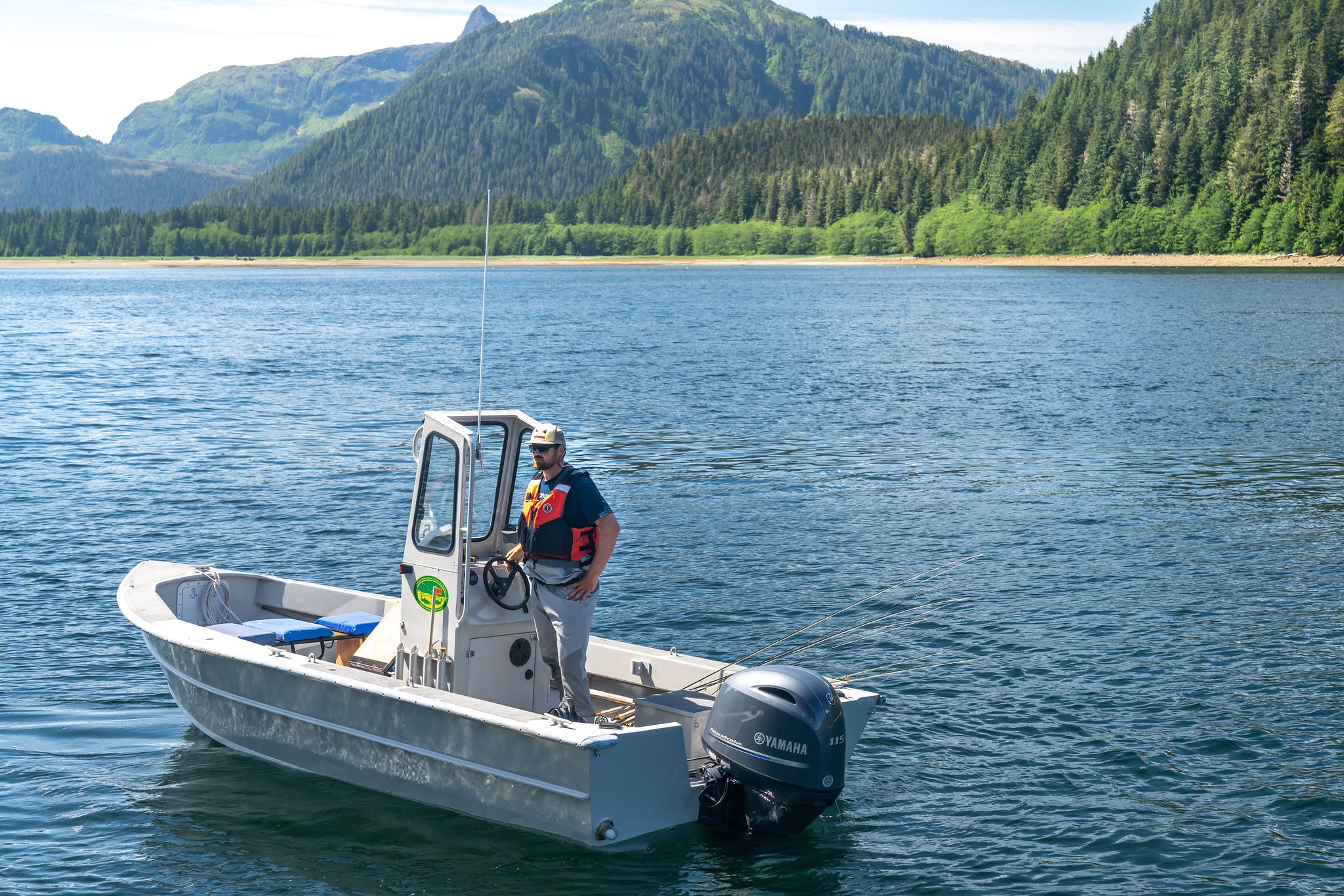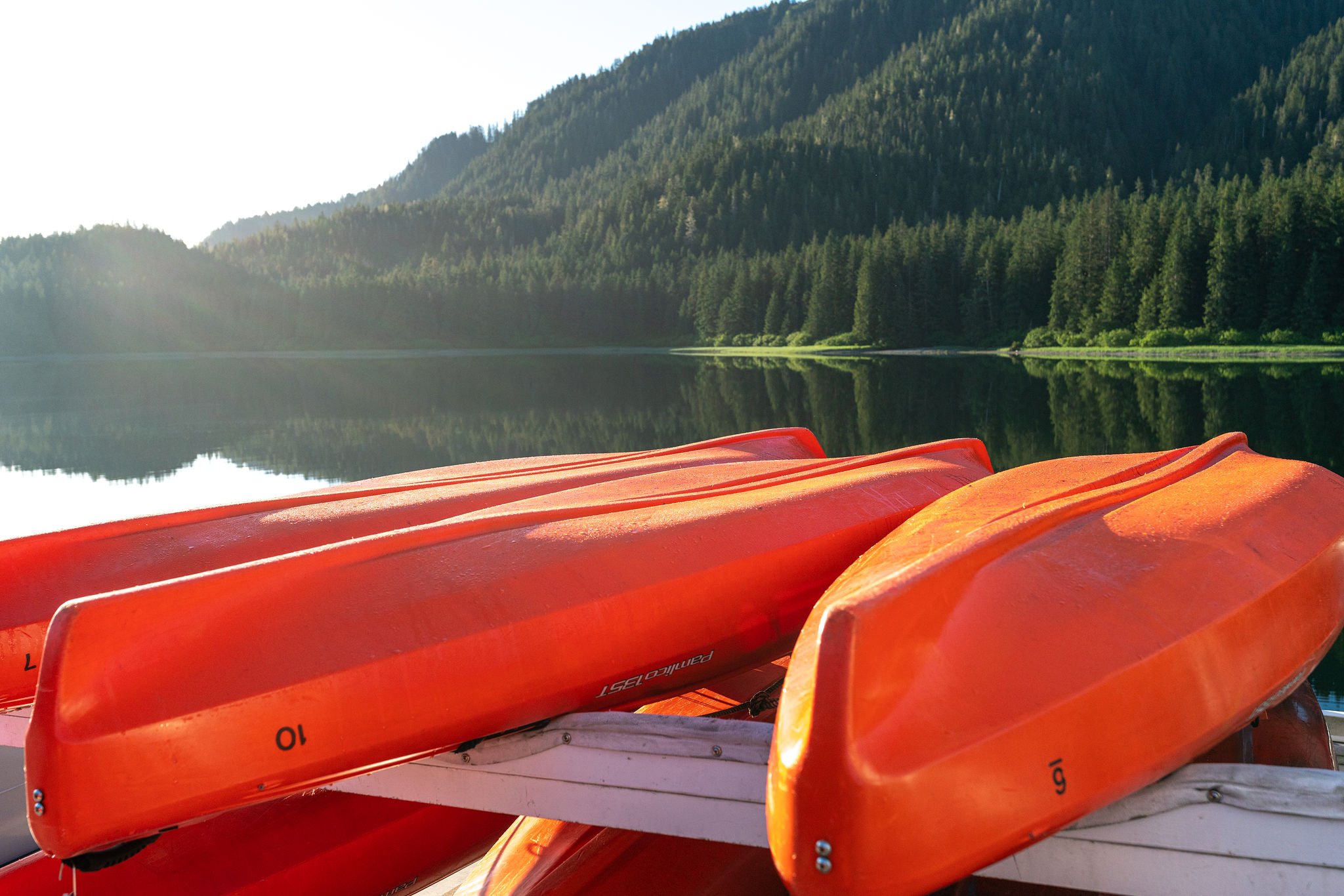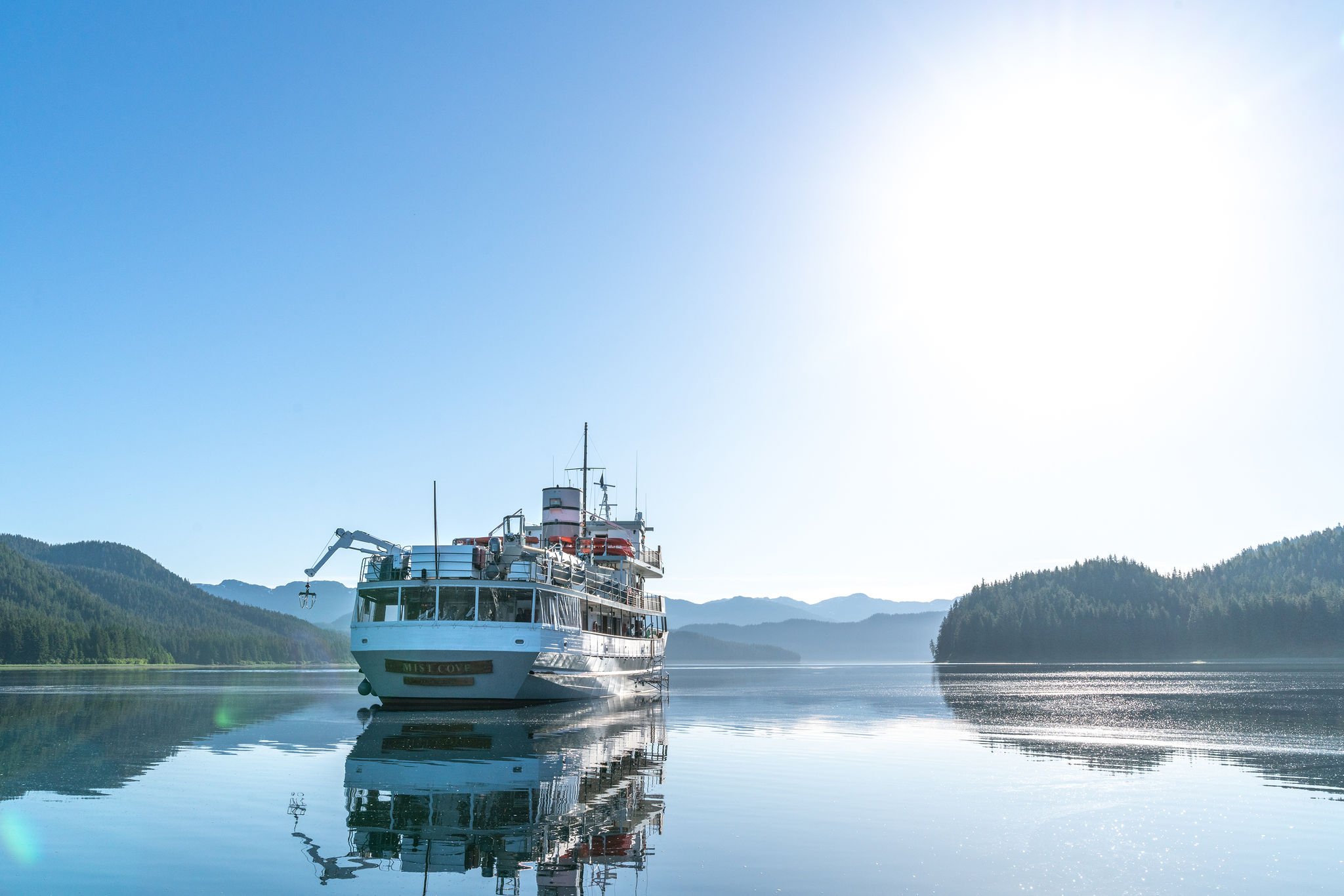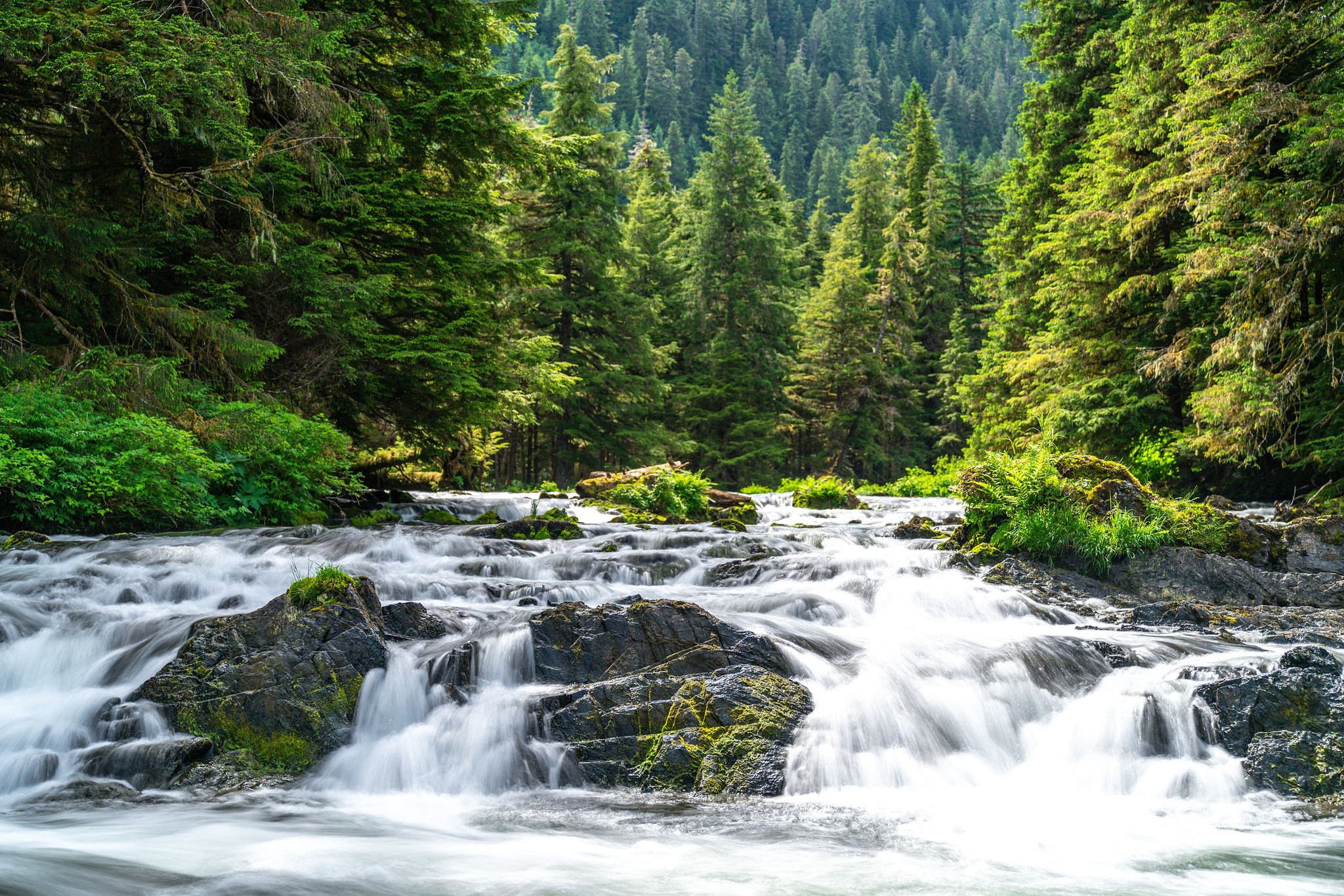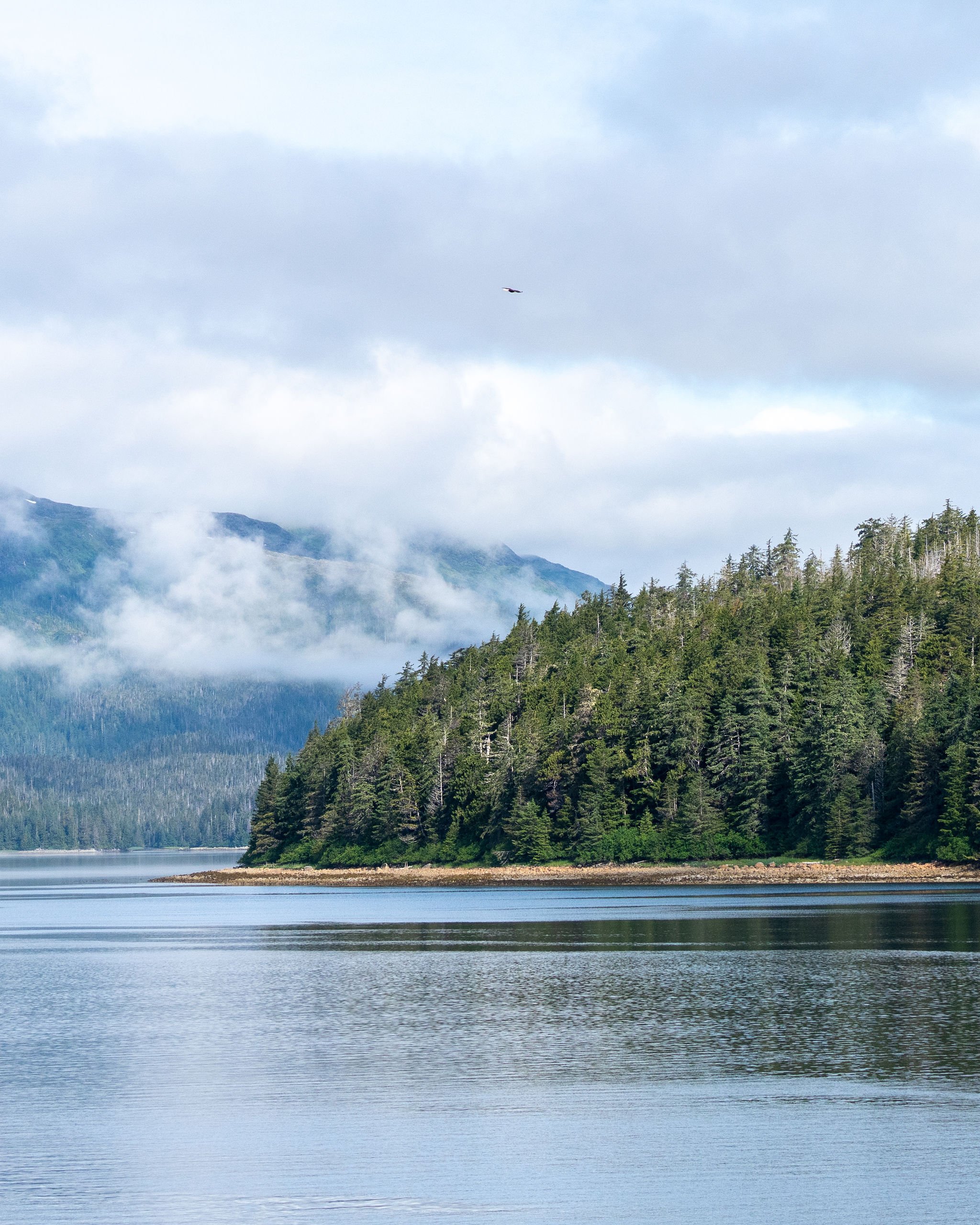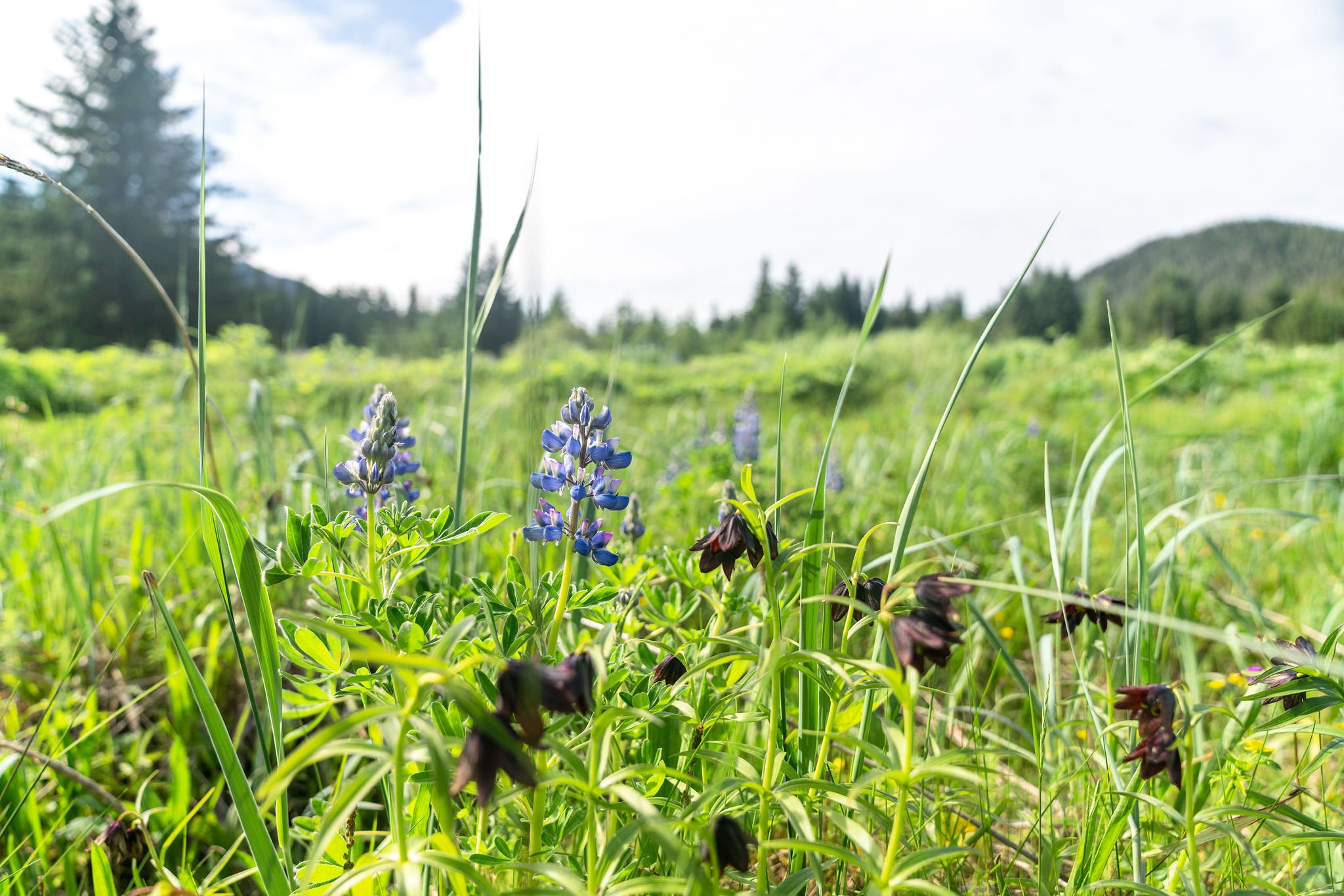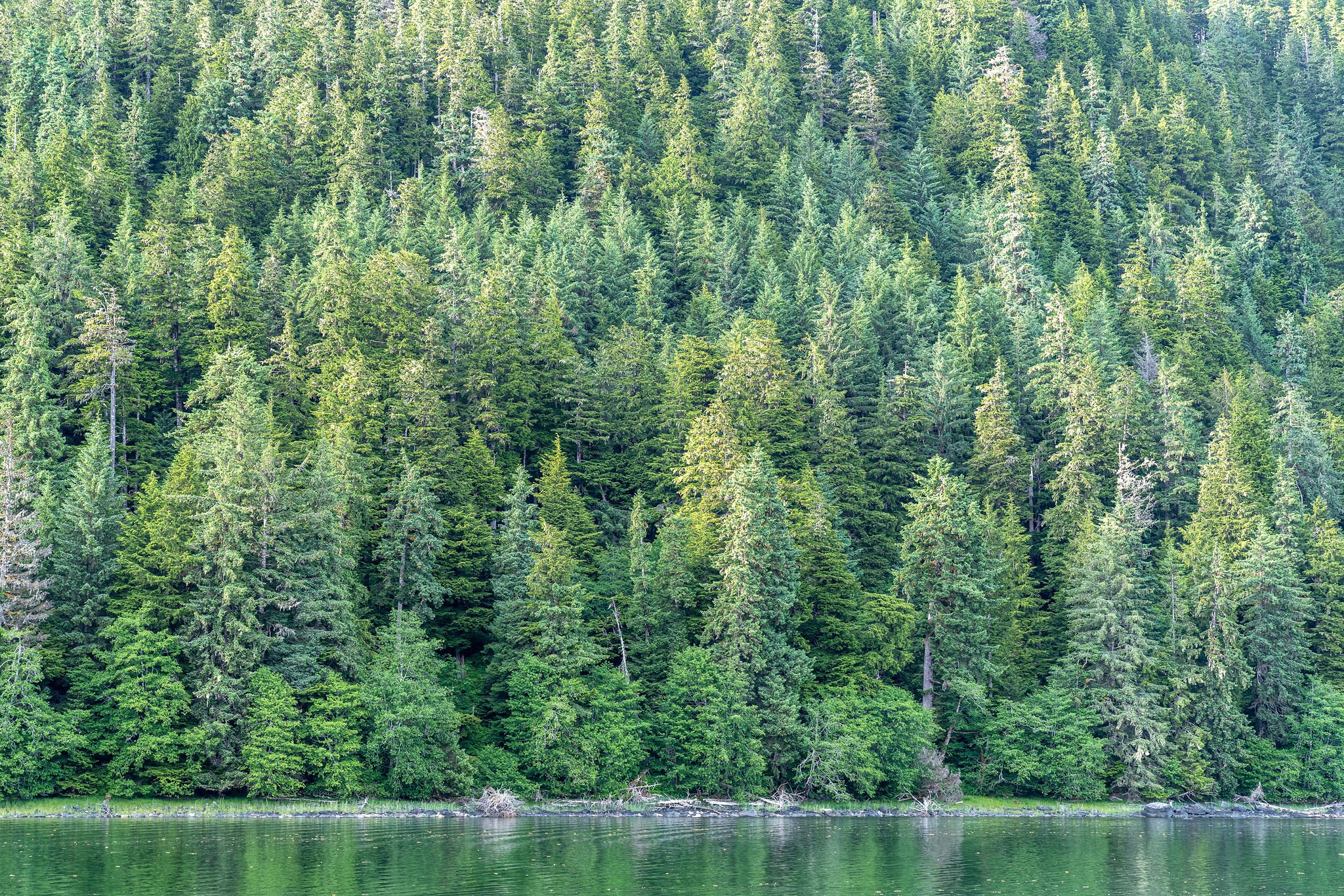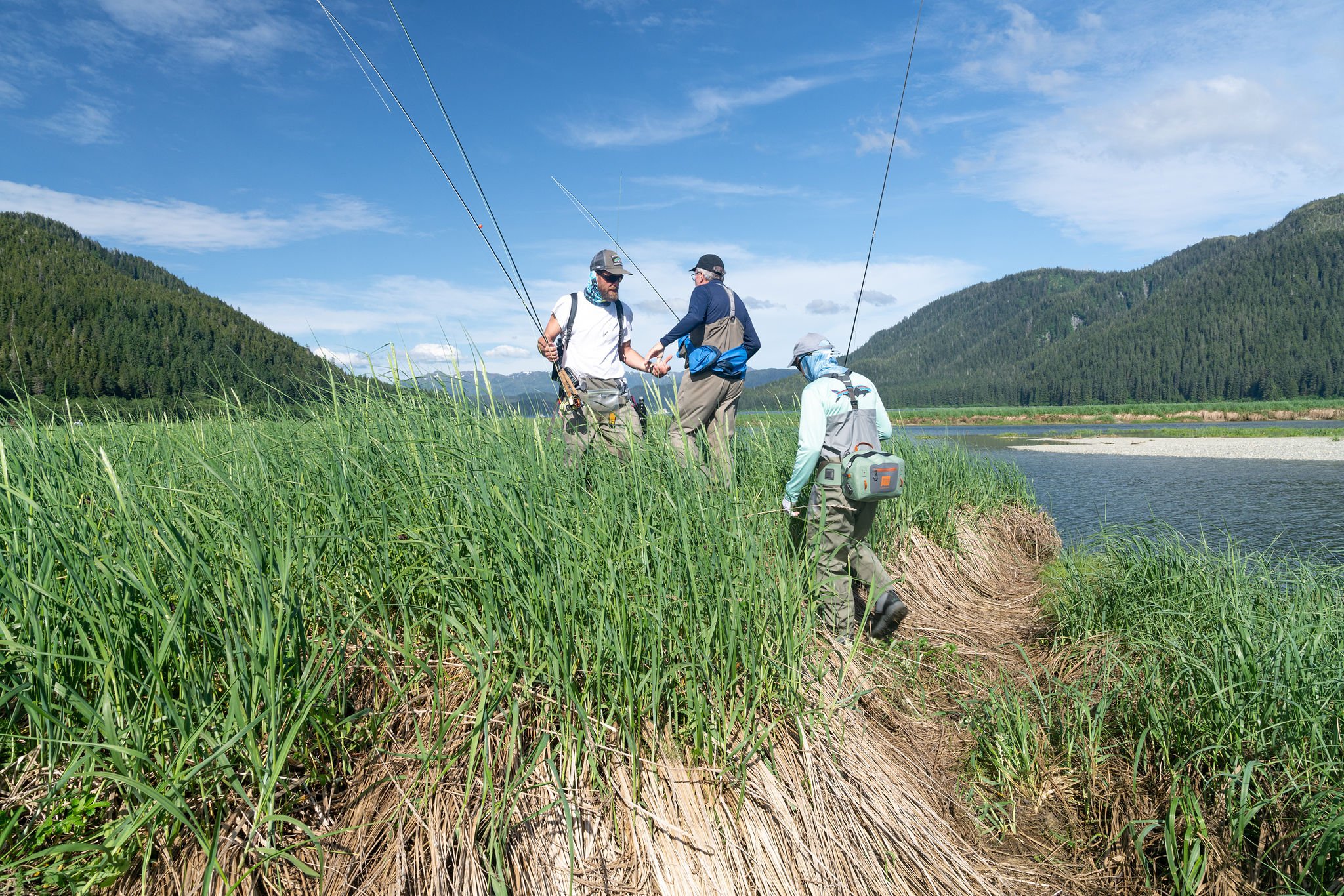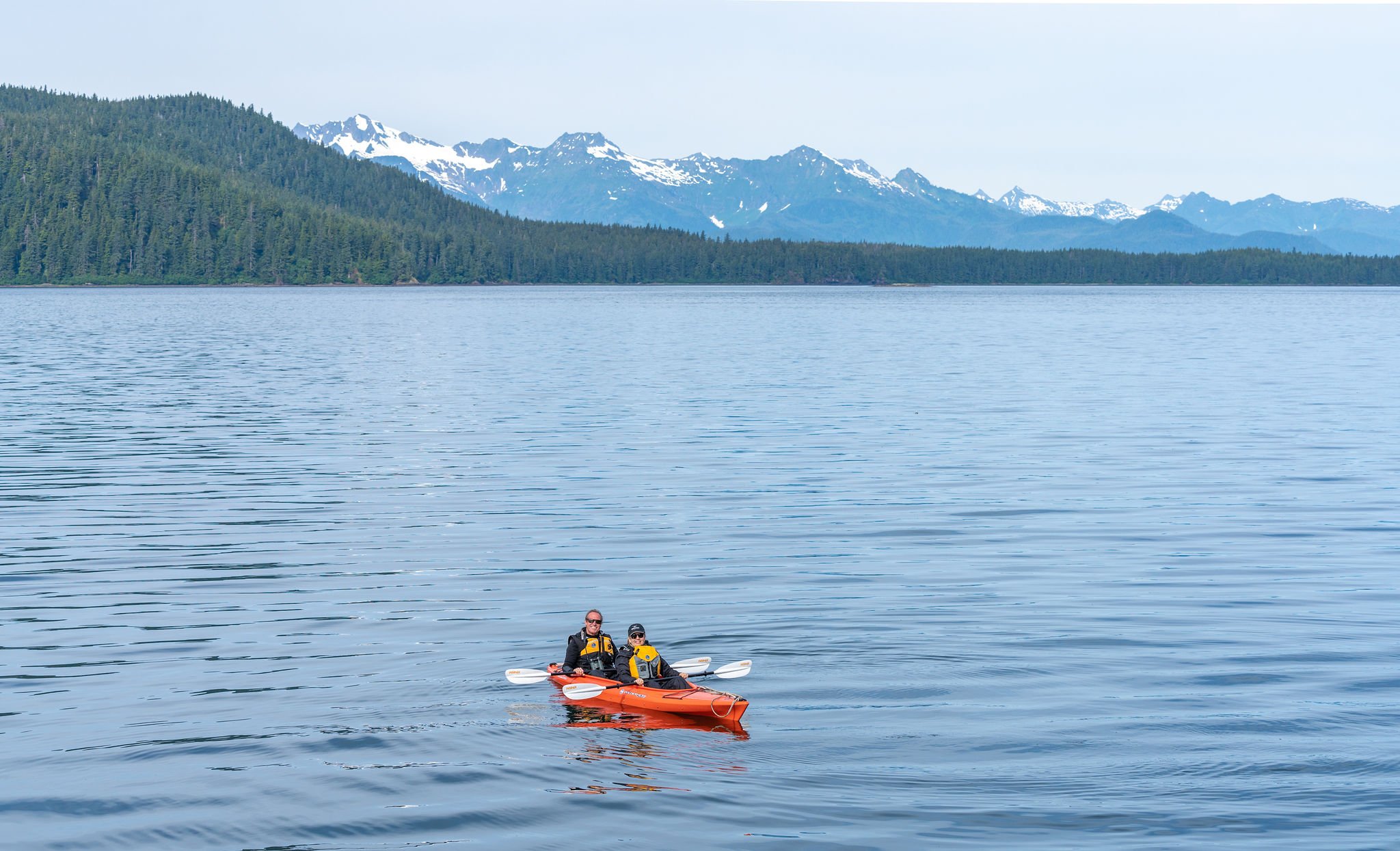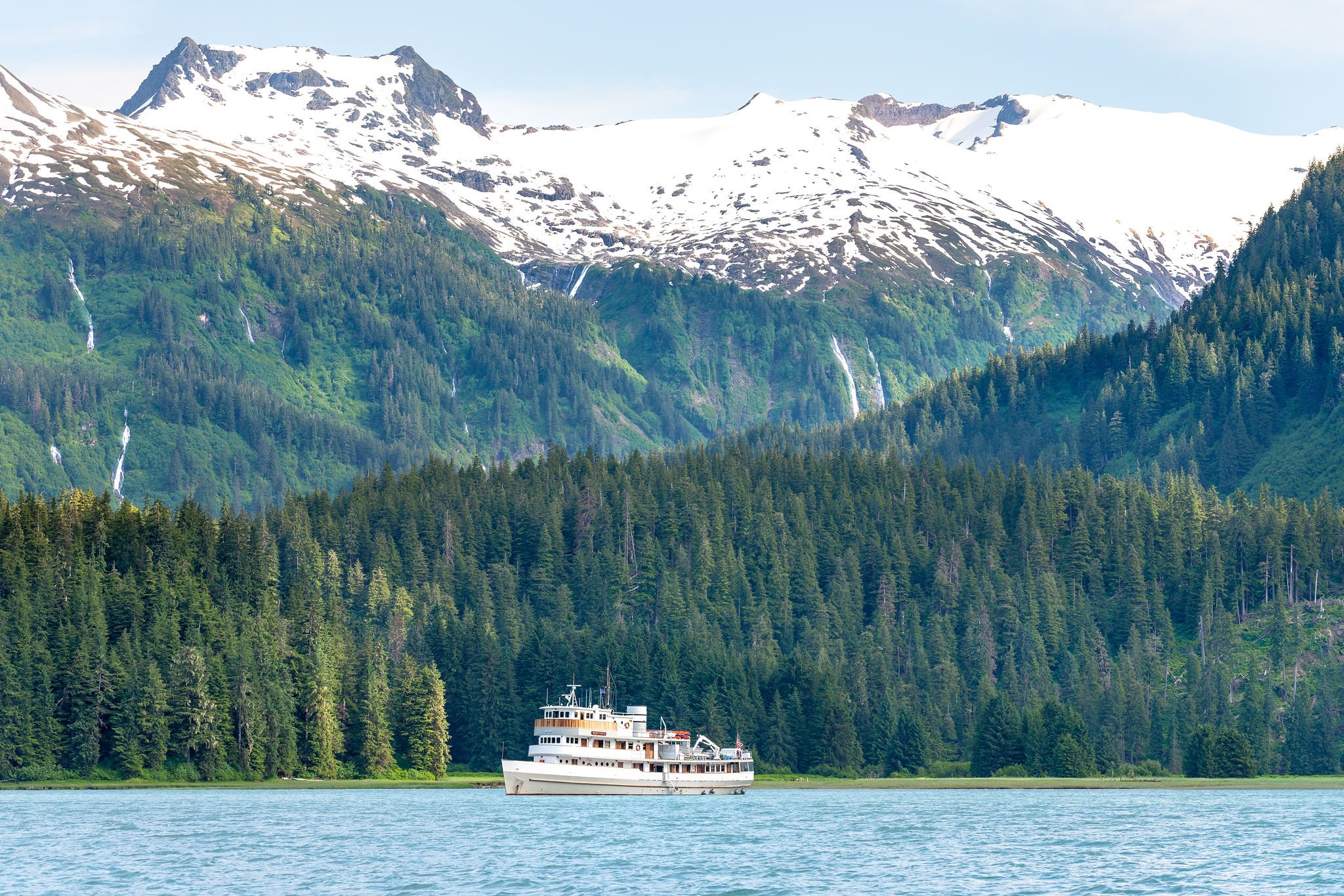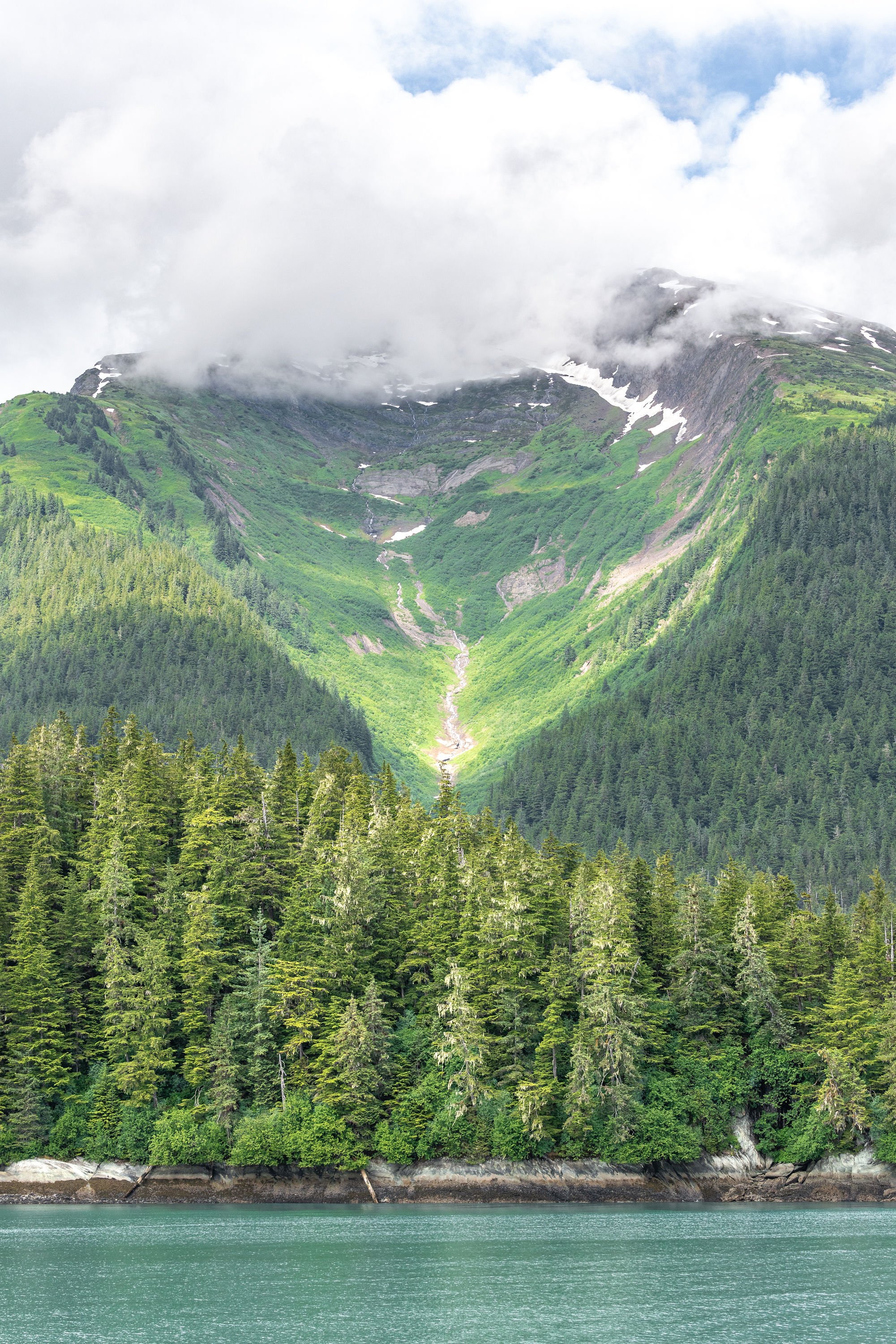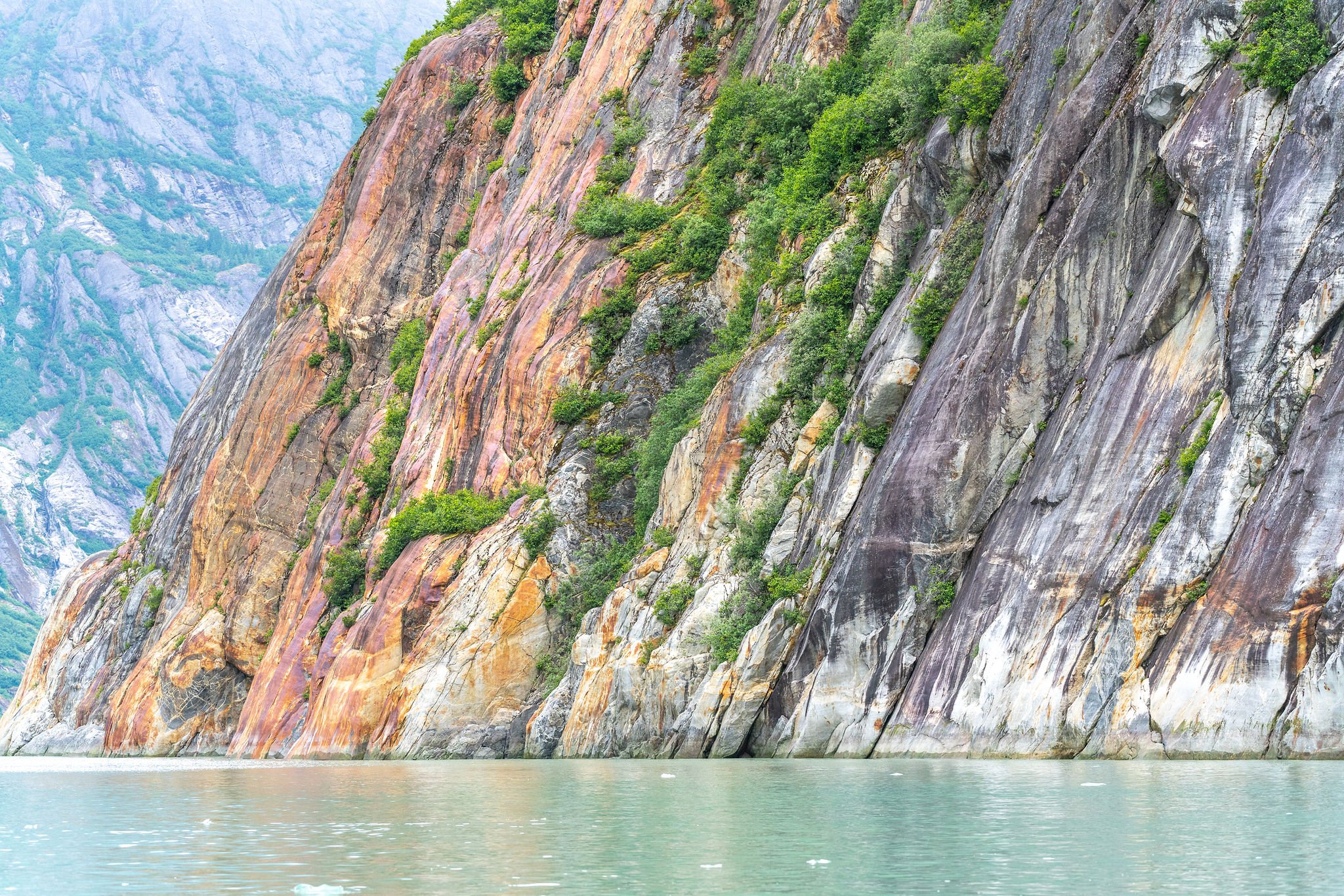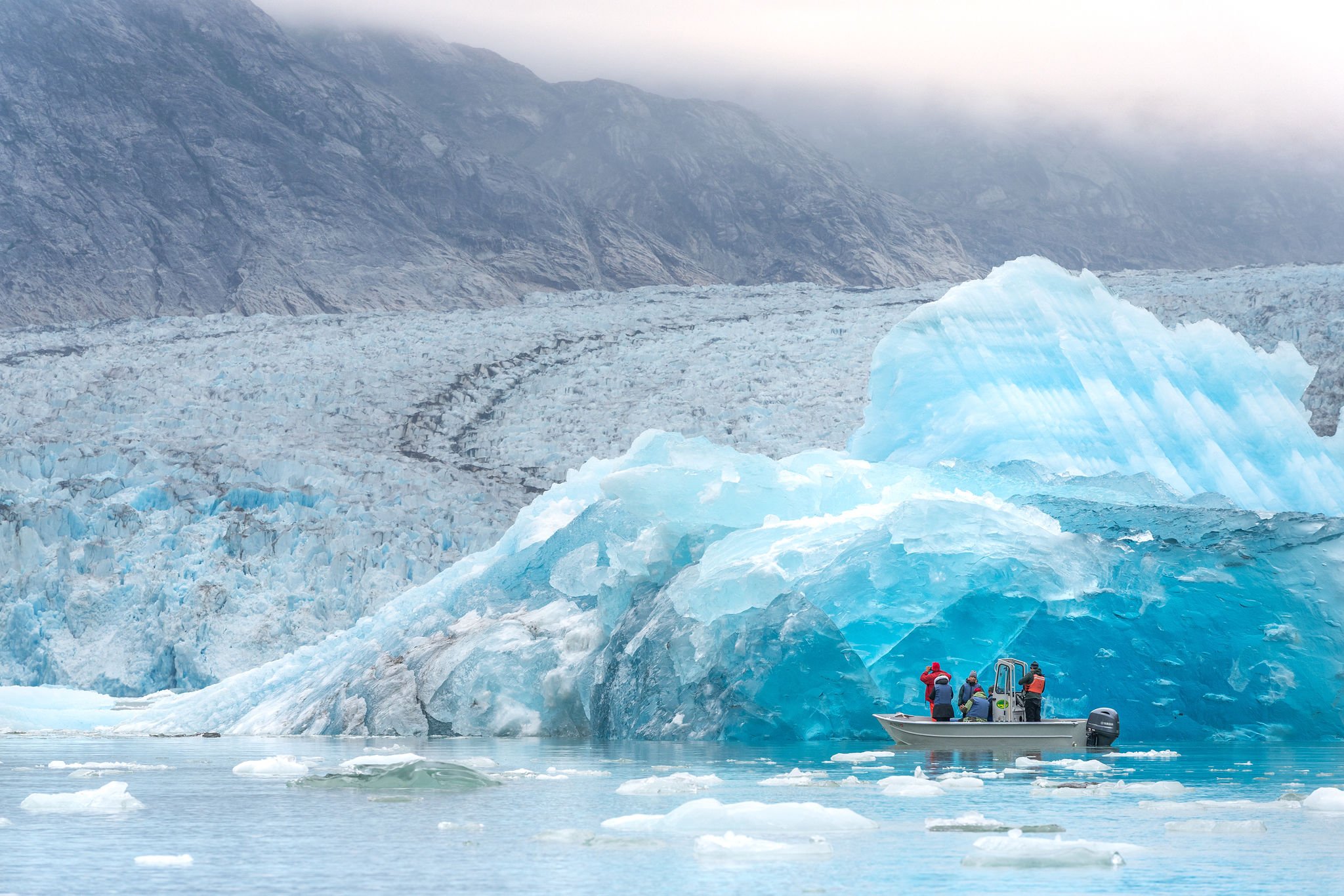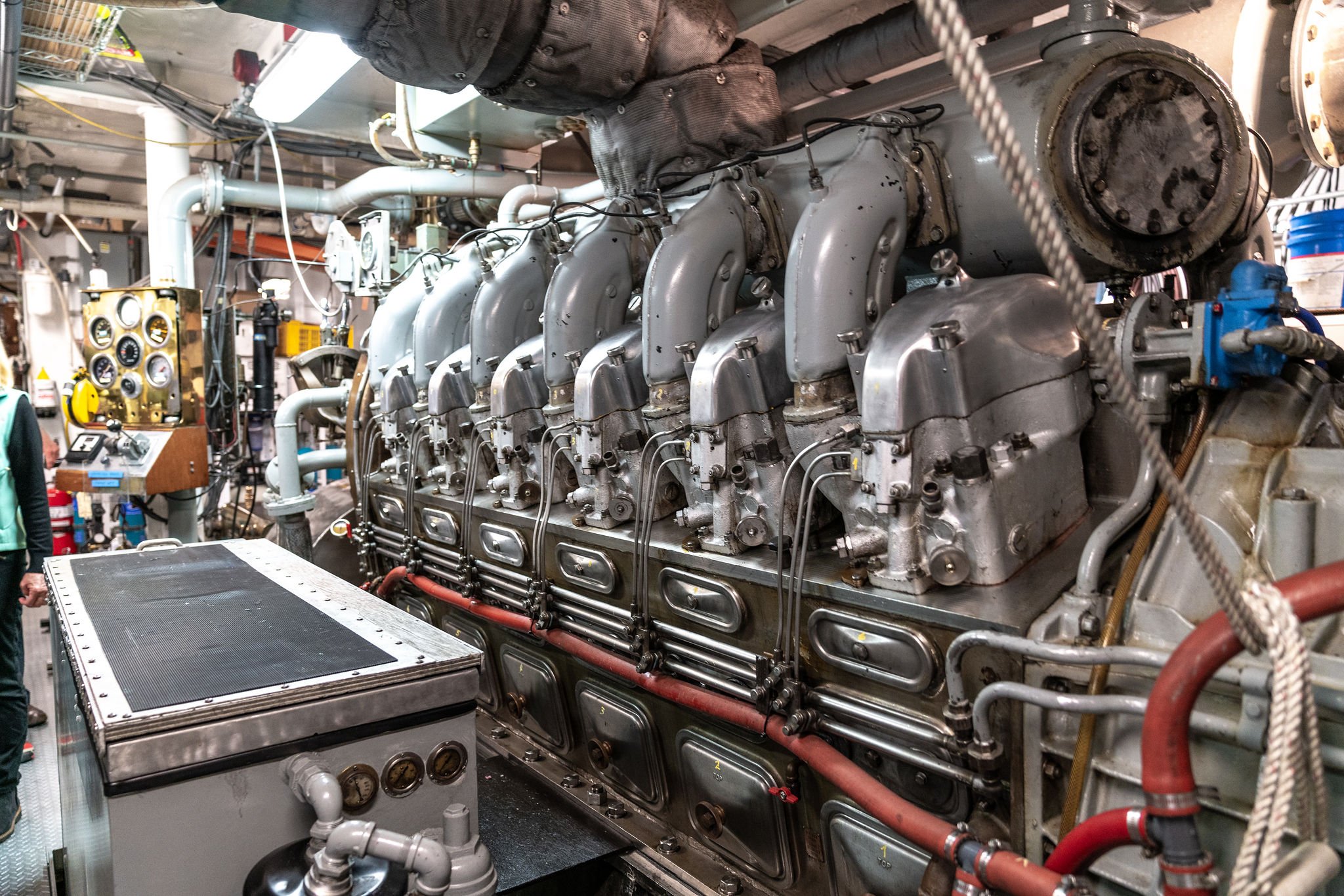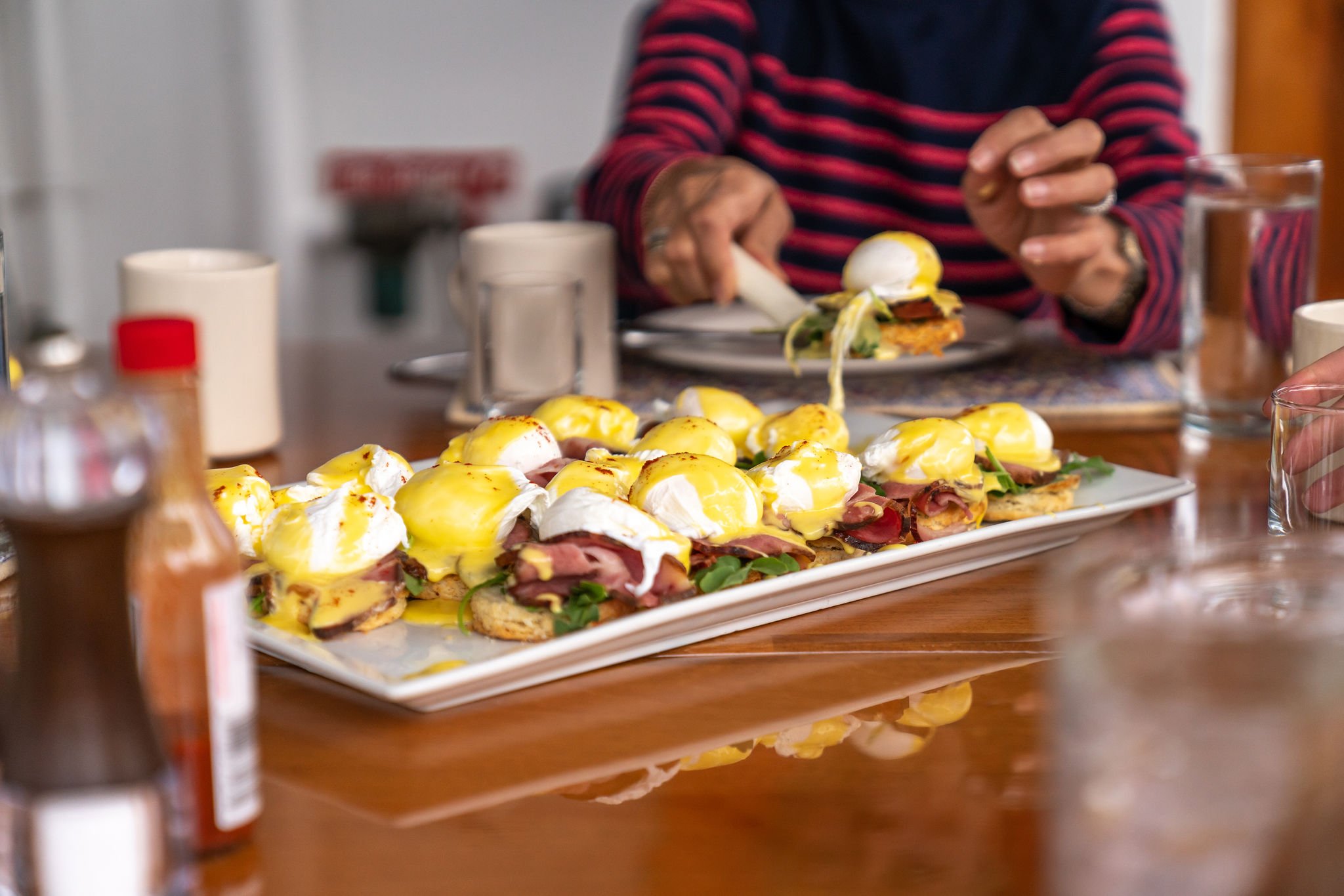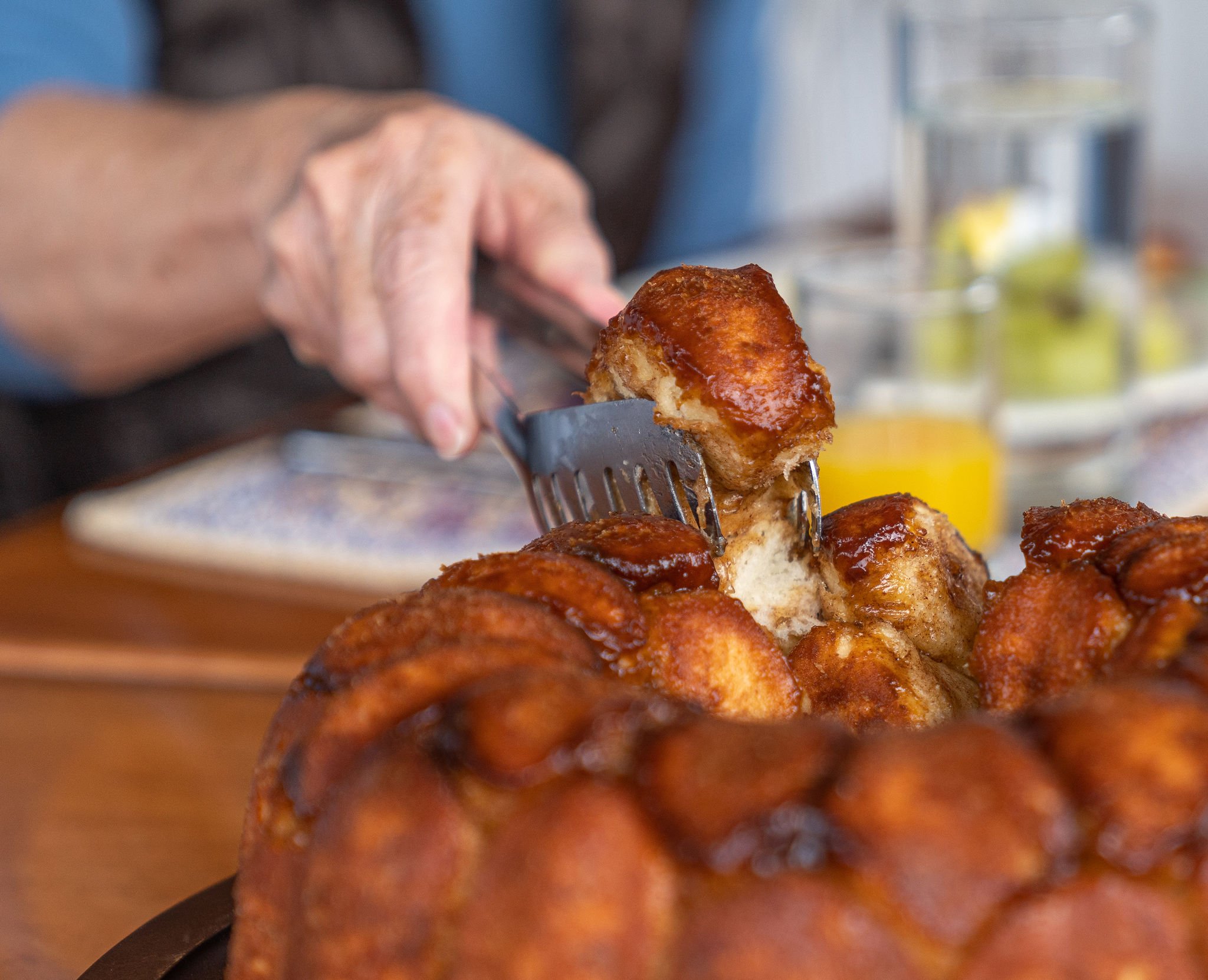
Cruise Itinerary
2026 Itinerary
The following is a sample itinerary, but your particular cruise may be different. The vessel routes change due to the vagaries of weather or the spontaneous interests of guests. Fly fishers should note that this is not a dedicated fly-fishing trip similar to programs at Orvis-endorsed fishing lodges elsewhere. Guests may anticipate several fishing opportunities during the course of a cruise, but there will be some days when other activities such as whale-watching or glacier viewing take center stage. Vessels carry limited fly fishing gear, so serious anglers should bring their own.
For Juneau to Sitka cruises, simply reverse the itinerary.
SATURDAY - Arrival in Sitka (for Juneau to Sitka trips, simply reverse the itinerary)
Sitka is a remote fishing community located southwest of Juneau on Baranof Island, easily reached by scheduled commercial jet service. We suggest taking the day to explore the town and maybe get some shopping in. Your booking includes tonight’s stay at the Southeast Resort ahead of embarking on Sunday.
SUNDAY – Board ship, Cruise to Sukoi Inlet
The crew will meet you at 2:00 pm at the Westmark Sitka, in a specified space, to escort to the ship for a safety orientation and departure.
Bald eagles and Steller sea lions are regularly seen in the vicinity of Sitka Harbor as the ship heads north to the first night’s anchorage in scenic Sukoi Inlet on Kruzof Island.
Here we’ll settle down to an exquisite gourmet dinner and, as evening falls, gather with friends in the ship’s comfortable salon or stroll the decks breathing in the beauty and serenity of Southeast Alaska. Take a few minutes tonight to get a fishing license from your crew. Fishing licenses are included in your charter.
MONDAY – Salisbury Sound & Sergius Narrows
Not far from the night’s anchorage is a popular saltwater sportfishing area, Salisbury Sound, where an all-morning salmon trolling trip aboard one of the ship’s sturdy skiffs may be of interest to the angling enthusiast.
Crew can custom-process your catch, vacuum pack and freeze it on board, and advise you on the best methods for shipment. Alternatively, the ship’s Chef is happy to prepare your catch for dinner and share recipes as regulations allow.
If fishing does not interest you, join in a skiff tour along the rocky shoreline to spot sea otters in company with an on-board Naturalist who will share insights into the natural history of this region. We are in the heart of a coastal Alaskan wilderness so we will keep a lookout for brown bears, often seen grazing on lush beach grasses throughout summer…easy to spot from a skiff.
By lunchtime, we return to the ship to haul anchor and head through Sergius Narrows into Peril Strait. We cruise until dinnertime, when we find ourselves anchored in Saook Bay, another scenic Southeast Alaska harbor.
TUESDAY – Paradise Flats & Kelp Bay
Get up early to join a few other early risers in a quiet kayak paddle around the anchorage. Or perhaps head off in a skiff with a crew member to haul the Dungeness crab pots we set the night before.
The stream at the head of Saook Bay flows through a broad grassy beach estuary called, appropriately, Paradise Flats. This place is heaven for fly fishers. We spend the morning here casting for Dolly Varden char and Cutthroat trout (or, later in the season, pink salmon).
Back on board for lunch while the ship gets under way to Hanus Bay. Where we’ll take the short hike up the trail to Lake Eva where we will find a grove of Sitka Spruce trees that are among the tallest and largest girthed in the Tongass National Forest. There may even be an opportunity here to do a little more fly fishing near the lake’s outlet before everyone re-boards the ship and proceeds on to Kelp Bay for the night.
There are choices of activities every day, and the ship’s crew-to-guest ratio is such that guests can go off in small groups with a knowledgeable staff member to explore according to their interests. Small groups also have less of an impact on the fragile, temperate rainforests environment of the Tongass National Forest.
WEDNESDAY – Red Bluff & Pybus Bays, Admiralty Island
Early risers may go kayaking before breakfast with a guide, where you might see harbor seals and harlequin ducks. Neither species have much fear of stealthy paddlers in this secluded bay. Photographers, in particular, love these early morning outings.
Later, motoring south on the ship, we cruise along the “waterfall coast” of Baranof Island – one of the most scenic coastal wilderness areas in southeast Alaska.
When we get to Red Bluff Bay, we will divide the ship’s company into several groups to go ashore. Some may choose to fly fish in the river at the head of the bay. But the highlight of this place is the short but steep hike up onto the brick red bluffs, which give this place its name.
Here, wildflowers are dense in summer, and the natural rock gardens are resplendent with splashy displays of blue and yellow violets, columbine and fragrant meadow orchids.
After our hike, we return to the ship again and haul anchor, bound for Pybus Bay on Admiralty Island where we will spend the night.
The local Tlingit tribe’s name for Admiralty Island is Kootznoowoo, which means “fortress of the bears.”
THURSDAY – Admiralty & Brothers Islands
Today is our final opportunity for hiking and fishing, and we have saved some of the best of both for last. We pack lunches and head out in the skiffs right after breakfast. Brothers Islands, lying just off the mouth of Pybus Bay, are notable for their unique mossy terrain. A gentle walk through the lush rainforest on one of these small islands leads us to a wild stretch of rocky beach.
Great numbers of Stellar sea lions will sometimes haul out onto some of these beaches, and if we are careful we can approach these noisy “rookeries” by skiff without disturbing the sunbathing animals.
Halibut fishing in Pybus Bay is often productive, as is fly-fishing or spin casting for Pink salmon or Dolly Varden char in nearby Donkey Creek.
Bald eagles perch solemnly in the tree tops waiting for an opportunity to snatch an unwary fish from the water. Bears are common here, and your fishing guides on shore will carry a tackle box under one arm and pepper spray, just in case, under the other.
FRIDAY – Glacier Day
Today is “Glacier Day” as crew members call it, when we are bound for either Tracy Arm or Endicott Arm; two spectacular fiords carved deep into the Coast Range by rivers of ice.
We head towards the face of a glacier by skiff where you can watch (at a safe distance) great chunks of ice, some the size of our ship, crash into the ocean in a frenzy of foam and spray.
The ship’s Chef outfits each skiff with hot cocoa and homemade cookies.
Harbor seals find abundant food in the nutrient-rich waters of these inlets and, for a period of time in summer, we can observe female seals hauling-out onto ice bergs in order to give birth to their young.
Late in the day we leave the fjords behind and anchor in Taku Harbor, not far from Juneau, where guests enjoy a particularly sumptuous cruise wrap-up dinner, followed by an “underground tour” of the ship’s engine room and a celebratory “roast & toast” with crew.
SATURDAY – Juneau, disembark ship
We arise early and take breakfast under way, with ancient and untouched spruce and hemlock forests marching past our ship’s wake as we make way back to civilization.
By 10:00 AM we are tied to the dock in downtown Juneau, where guests disembark.

Day 7
Day 2
Cruise Diary
Follow our guest, Marisa, aboard the Mist Cove in a mid-June expedition throughout the Tongass National Forest.
-
Saturday, June 17: I arrive in quiet and completely quaint Sitka, a remote fishing community located on Baranof Island. After taking a walk slowly enough to imbibe the colorful tones of dwellings and natural landscape, I check into the Westmark Sitka Hotel. Shortly after, my feet were craving to get back out to the town to leisurely pace my way through the sweet streets and shops, then return to the Westmark to rest. (The hotel stay is included in the cruise).
-
Sunday, June 18: Today, we stepped aboard the magnificent M/V Mist Cove and left the intricacy of small town Sitka. We embarked towards vast expanses of open waters and what must have been millions of trees. I meandered through the charming corridors of our ship and noticed its classic refinements. At night, I was able to share moments of conversation with all of my 20 fellow explorers, and was delighted to meet a wonderful couple from my hometown in Palm Beach, Florida. We laughed over an elegant citrus pork tenderloin complimented with vibrant vegetables. Then the Mist Cove and all her companions found the night’s respite set in a silent cove we had to ourselves.
-
Monday, June 19: I woke up to a white canvas: white boat… white mist permeating each inch of the cove our boat had to ourselves overnight… white light streaking as the sun began to burn through. I hopped into a kayak early morning and watched the sky turn completely blue and clear slowly but surely before my eyes. After a warming, healthy breakfast began the selected activities for the day: hikes in a meadow, stream fishing, onboard respite and others were chosen by different groups of the passengers. I am surprised at how long the days are lasting—usually on vacation I’m acutely aware of how little time I have left—but thus must be summer light in the higher latitudes and thank goodness for it.
-
Tuesday, June 20: The respite is really setting in now. I wake up with a sense of peace I didn’t know I was missing. Quiche and coffee aromas called us all to breakfast and prepared us for the day ahead. I’ve never fly-fished before, but I wanted to go with the group so I could walk through water and photograph a short but wide waterfall unlike any photograph I’ve ever seen. I laughed as I watched some of my fellow passengers sit in the water or lay on grass like children, eating their bagged, gourmet lunches. The night ended with that feeling you have when you’ve spent the whole day outside doing what you love, and a new sense of friendship amongst passengers sharing this once-in-a-lifetime experience.
-
Wednesday, June 21: The forest around us was especially beautiful today. After breakfast I found new friends doing a puzzle together and others reading in solitude. We’ve come accustomed to running to the balconies if we hear the engine shut off, as Captain Jim stops at sightings of eagles, bear and whales. I realize how we are really visitors here and that there are no other humans around—until we sight a rare crossing with The Boat Company’s other vessel, M/V Liseron! As the two boats travel in opposite directions each week, on rare occasions, they end up being the only two boats in a cove for short overlap. I must be lucky because my dates match up with owner Hunter McIntosh’s M/V Liseron trip, and he hops on board to tell us about his father founding The Boat Company and more.
-
Thursday, June 22: Parsley parmesan eggs over roasted asparagus for breakfast, a fresh sesame steak salad for lunch, and a macadamia nut crusted halibut for dinner are all topped by the kitchen letting me in to watch them make creme brulee from scratch. Or perhaps the Sauvignon Blanc brought from one of the passenger’s vineyards. What a wonderfully tough call to make of the highlight of my day. As far as off-board, we had otter, brown bear and eagle sightings today. The evening was capped with a naturalist discussion, with added insight from our fellow passenger, a geology professor. After the experiences we’ve had in the Tongass so far, including learning about The Boat Company’s mission, and the naturalist discussions about the state of our planet’s ecology, it is hard not to feel the impetus to be a part of this cause—although I already am simply by choosing an exploration on this company’s boat.
-
Friday, June 23:
I’ll make sure to include a photograph because words alone might not do the Dawes Glacier justice. Today, the sun was fighting with the clouds in one of those days you may notice having around Spring or Fall when the seasons are fighting each other to change. As a photographer, I am amazed at our luck to have some moments of overcast, as I know this perfectly neutral light is the best for glacial-viewing. We all hop on skiffs and meander our way through iceberg pieces and close to the master glacier herself. Chef Amber sent us off with freshly baked chocolate chip cookies and hot cocoa to keep us warm near the ice. It is so rare in most parts of my home country, at least, to be surrounded by white, grey and turquoise-glowing light. I allow it all to permeate my eyes and then close them, hoping to have made a biological imprint of this place in my body.
Now the little inklings of the trip being over soon are present. I push them away and am relievingly distracted by turquoise water, tinted this color by the glacial silt of the nearby glaciers. We take skiff rides to explore waterfalls, rainbow-colored rocks and other glacial settings. The crew invited us for a tour of their quarters and other mechanical areas of the boat such as the engine room. It was special to tie together all of the experiences we’ve had with the effort behind the company’s pristine engines, living quarters and more.
-
Saturday, June 24: What a bittersweet feeling. The kitchen team prepared the most wonderful goodbye breakfast. We all had quiet time with each other to say how much we enjoyed each other’s company - whether often or just as passers-by on the ship. As we disembark, the crew waves us off and we may either walk to be transferred to the hotel, or head straight to the airport depending on flights. Some even chose to stay an extra night to take in the sights of Juneau (or Sitka if you started in Juneau).
Day 6
Day 2
Day 4
Day 5
Day 4
Day 6



